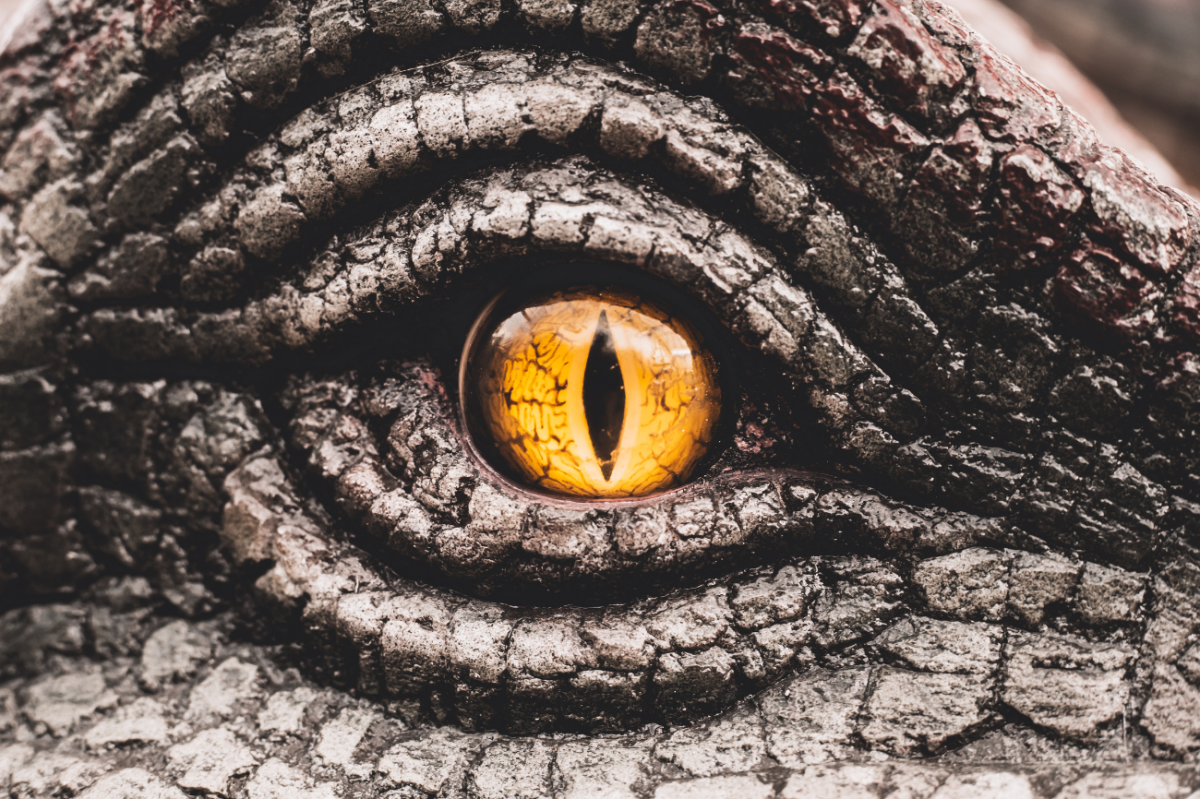Dinosaurs Laid Eggs, So Do We Classify Them All As Reptiles?
Posted on Categories Discover Magazine

Let’s start with a definition: Dinosaurs, according to the Natural History Museum in London, were the dominant group of animals that roamed the land for between 140 and 160 million years.
Yes, all dinosaurs were egg-laying reptiles. But they were also distinct from other reptiles that lived around the same time.
For one, they had straight hind legs that stood perpendicular to their bodies. These helped them to use less energy compared with other reptiles – such as crocodiles, which have a sprawling gait.
Dinosaurs also had two holes behind their eye sockets, through which strong muscles were threaded. Because these muscles connected the jaw with the skull, they allowed for a more forceful bite.
It would seem that their categorization as reptiles is perhaps a bit overly simplistic. The more complicated answer hinges on how exactly we define what a reptile is. And to answer that question, we must revisit the dinosaurs’ downfall.
Read More: How the Age of Reptiles Began 250 Million Years Ago
When Did Dinos Go Extinct?
Most dinosaur species met their end during a mass extinction event that also killed roughly 75 percent of the planet’s entire plant and animal species.
What exactly caused the mass extinction remains somewhat open to debate, says Abdulrahman Bamerni, a geologist and lecturer at the University of Duhok in Iraq. He studies the composition of rock layers to better understand what ultimately led to the creatures’ demise.
Theories have ranged from the credible, such as global warming and volcanic eruptions, to the downright bizarre – such as dinosaurs developing a taste for their own eggs, or there being not enough female dinosaurs to adequately repopulate.
One 2019 paper published in the Journal of Nutritional Science even explored whether vitamin D shortages could be to blame. Such a deficiency could have reduced the integrity of their eggs, leaving most dead before they were even born.
Experts now largely agree, however, that a meteorite collision was involved to some extent. Its impact likely set into motion a series of earthquakes around the world, kicking up huge amounts of debris and dust into the atmosphere.
This particulate matter would have restricted sunlight and reduced the capacity of plants to photosynthesize — the consequences of which eventually reverberated all the way up the food chain, to predators such as dinosaurs.
Is a Bird a Reptile?
Not all life was extinguished, however. Feathered dinosaurs, which later evolved into modern-day birds, managed to survive.
Birds are, in fact, the only direct descendants of dinosaurs. (Crocodiles and alligators come from a common ancestor that predates the appearance of dinosaurs.) Some experts even make the case that birds still are dinosaurs.
That assertion has led to a debate over whether there’s a meaningful difference between birds and reptiles. Are birds, as the heirs of Tyrannosaurus Rex, just a sub-type of reptiles?
To get to the bottom of this, it’s important to know that there are two main systems that biologists use to classify animals: the Linnean system, which dates from the 1730s, and phylogenetics, which first came about in the 1940s.
Read More: What Species Today Are Descendants of Dinosaurs?
What Is a Reptile?
The Linnean way of sorting relies on an animal’s physical characteristics and largely ignores their ancestry. If we’re using the Linnean system, we must admit that a reptile is a cold-blooded animal with scales — and therefore birds aren’t reptiles.
And if we accept that definition, then we must also accept that the feathered dinosaurs that later evolved into birds were also not reptiles. Therefore, that means that not all dinosaurs were reptiles, right?
Phylogenetics is perhaps a little more sophisticated. This cataloguing technique uses physical attributes to investigate an animal’s evolutionary history and then group them by their shared ancestors.
Were All Dinosaurs Reptiles?
In this case, that would mean any descendant of a reptile is also a reptile. And with that definition, it’s easier to argue that birds are in fact reptiles — and that all dinosaurs were reptiles too, according to the University of Michigan.
The Linnean system helps us to understand how animals live, what ecological niche they occupy and how they interact with their environment. On the other hand, the phylogenetic approach helps us achieve a sense of how animals came to be.
Both methods have their uses, so feel free to argue that all dinosaurs were reptiles — or weren’t reptiles — to your heart’s content.
Read More: How Do Scientists Reconstruct What Dinosaurs Looked Like?